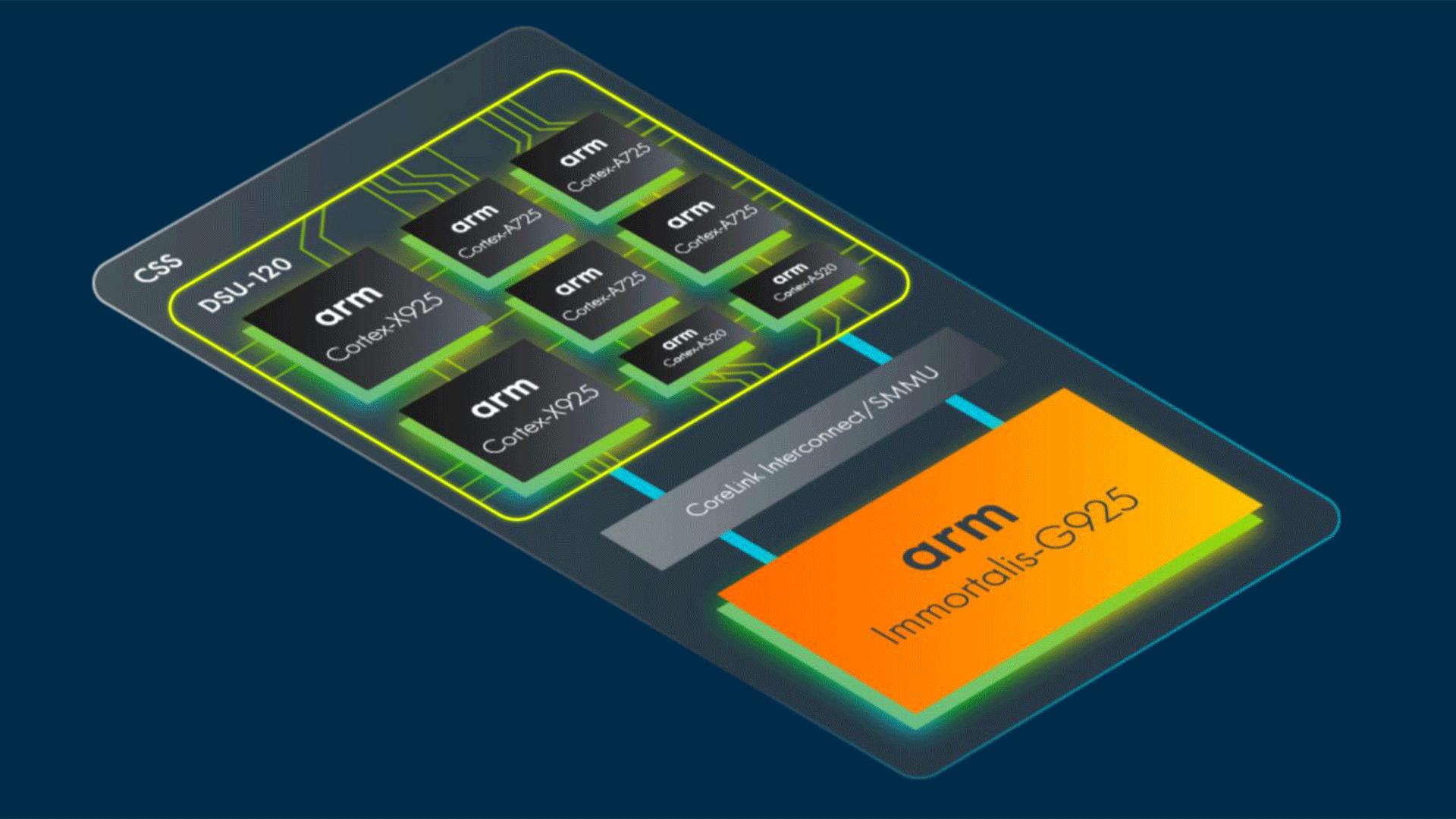
Arm on Wednesday introduced its first compute subsystems for client PCs, greatly simplifying the development of processors for desktops, laptops, and tablets running Android, Linux, and Windows. The new CSS packs high-performance CPU and GPU IPs and will enable Arm's partners to build high-end system-on-chips for mobile devices and therefore potentially greatly expand the Arm ecosystem.
"We are now delivering physical implementations across Arm, CPU and GPU, making it easier to build and deploy Arm-based solutions and leaving nothing to chance, enabling new performance points, compute capabilities, and helping speed time to market," said Chris Bergey, SVP & GM of Arm's Client Line of Business.
Arm's CSS for client PCs relies on two ultra-high-performance Arm Cortex-X925 general purpose cores (up to 3MB L2 cache per core and over 3.60 GHz clocks, SVE, SVE2 support), four high-performance Cortex-A725 cores, two energy-efficient Cortex-A520 cores, and an Immortalis-G925 graphics processor. Arm's latest CSS can support up to 14 CPU cores. The CSS is a production-ready physical implementation that can be made on a 3nm process technology (presumably TSMC's N3E — though this is speculation).
Actual specifications of Arm's CSS implementation could be altered by the processor vendor to meet its performance and power goals, but the FPGA that Arm used for performance evaluation included a Cortex-X925 core (2 MB L2, 3.80 GHz), 16MB L3, 32MB system level cache, DSU at 2 GHz, and LPDDR5X-8533 memory.
"Arm is providing more value, optimizing the whole stack for new 3nm process nodes, working with our leading foundry partners," Bergey said. "This allows us to provide IP in physical form. CSS for client brings together the physical implementation with the goodness of the Armv9 architecture for AI."
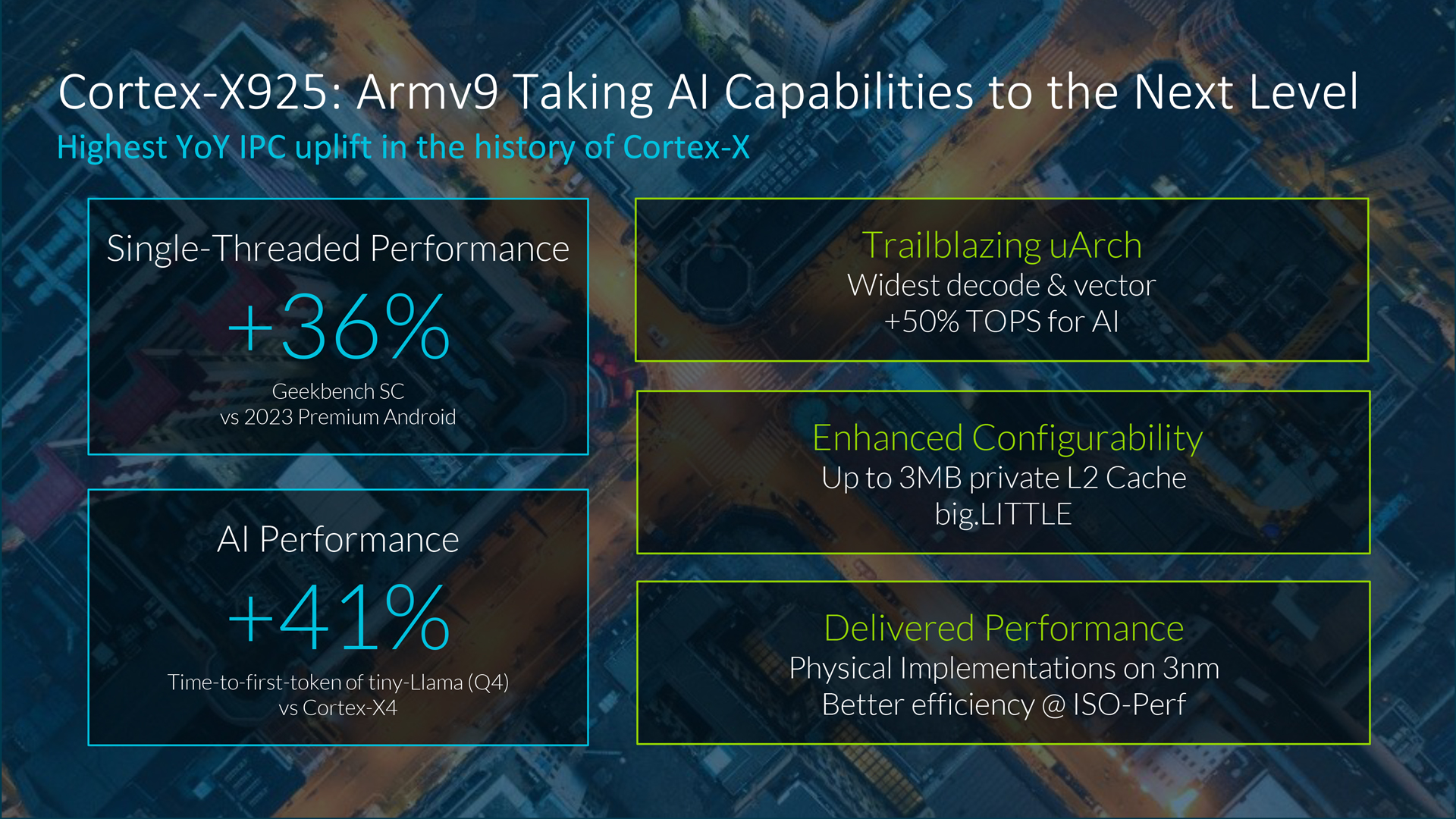
Arm says that its 2024 CSS for client PCs provides significantly higher performance than its TCS23 (total compute solution 2023) platform from last year, both in synthetic and real-world applications — at least based on FPGA performance runs.
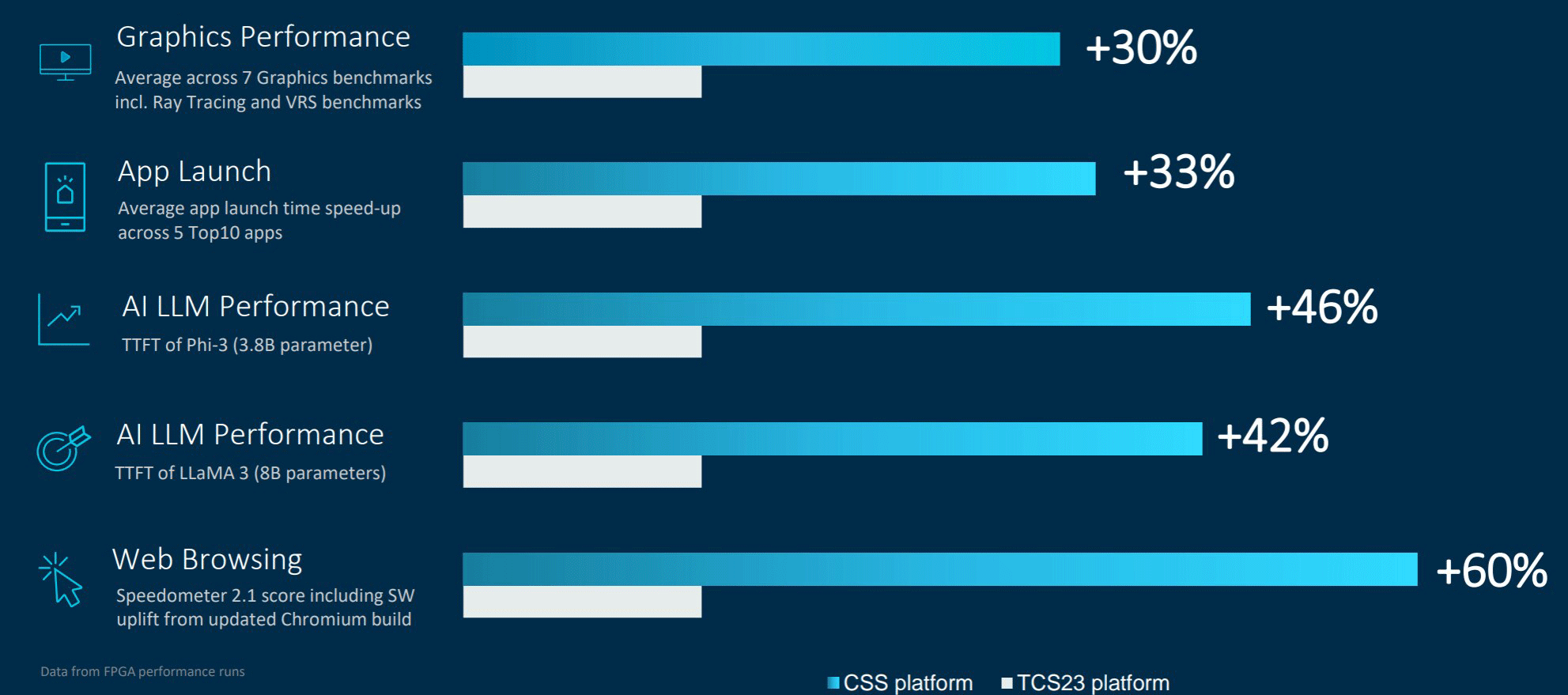
The Cortex-X925 CPU achieves a 36% increase in peak performance, as shown by Geekbench 6 single core scores compared to TCS23, according to Arm. It also reduces application launch times by 33% on average across five of the top 10 apps, enhancing productivity and providing a smoother user experience on mobile devices. Additionally, it offers a 60% improvement in web browsing speed, according to the Speedometer 2.1 benchmark, and boosts peak graphics performance by 30% on average across seven graphics benchmarks, including ray tracing and variable rate shading (VRS).
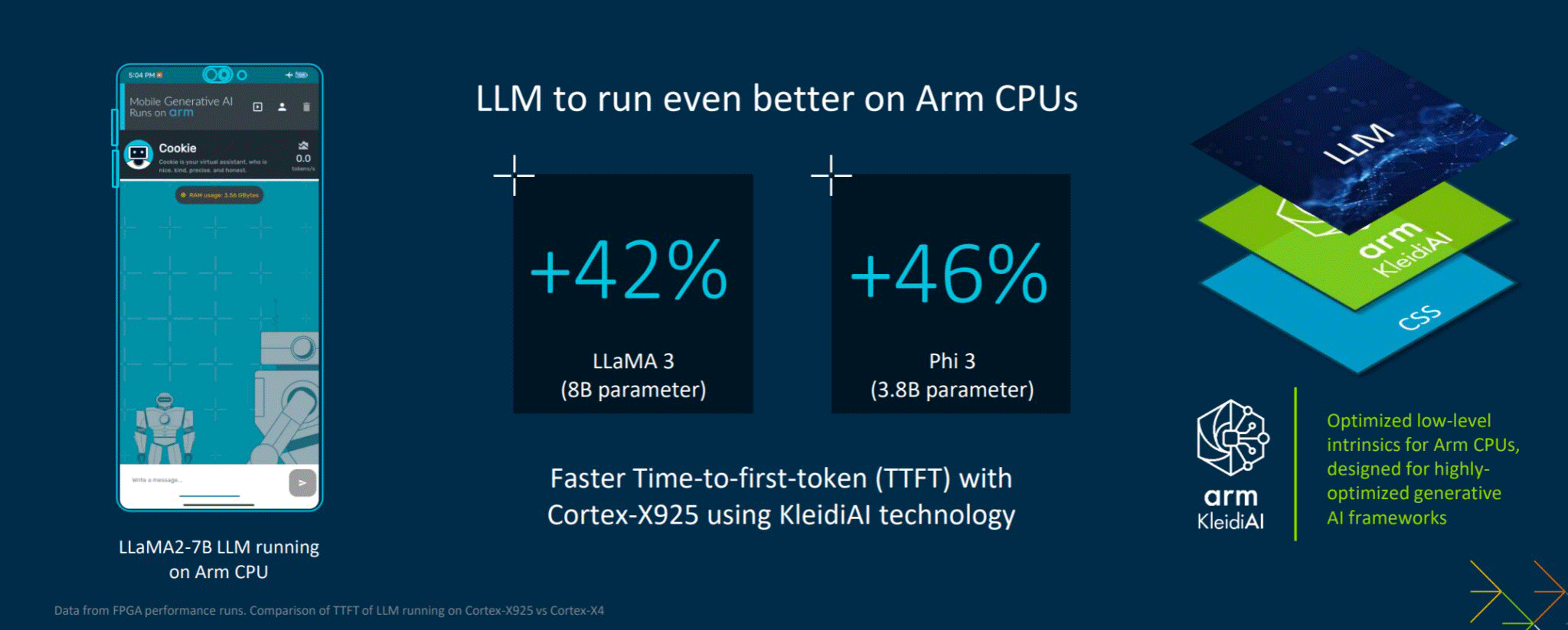
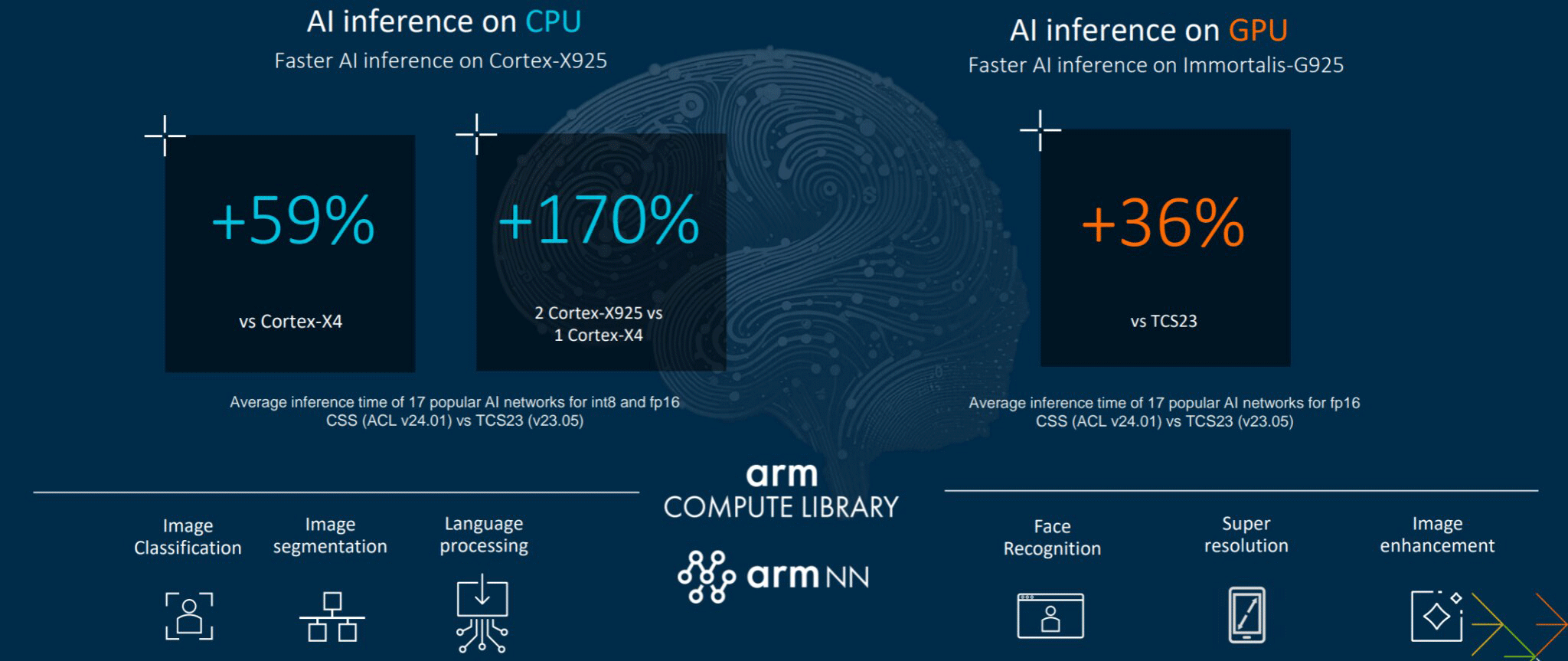
The new Cortex-X925 platform also offers up to 42% higher performance in LLaMA 3 (eight billion parameters) and up to 46% higher performance in Phi 3 (3.8 billion parameters) AI models compared to Cortex-X4, when using KleidiAI libraries designed to speed up AI applications on modern Arm CPUs.
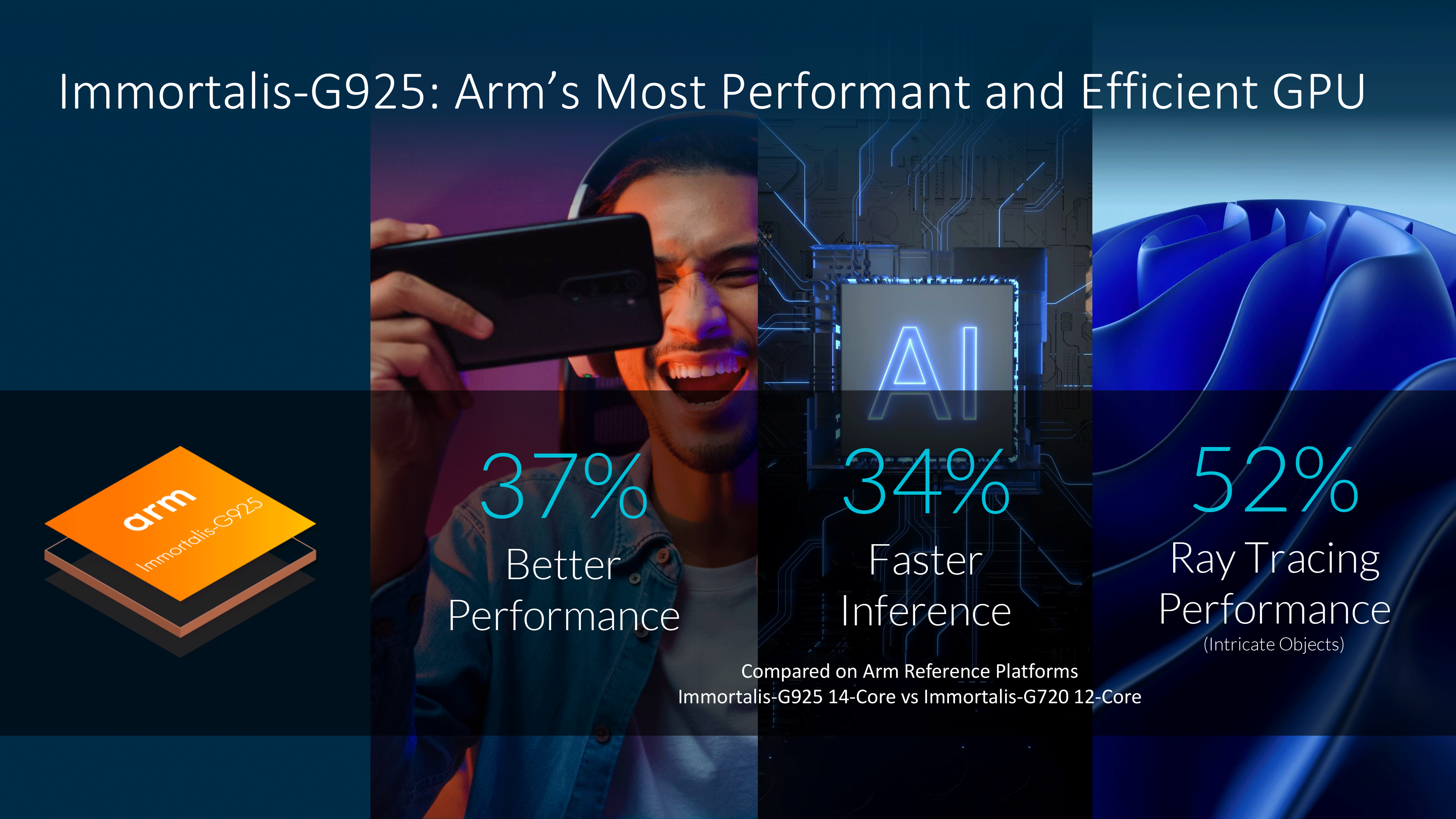
Processors based on Arm's CSS will compete both against x86 processors from vendors like AMD and Intel and against SoCs from Qualcomm, which is about to roll out its Snapdragon Elite processors.






